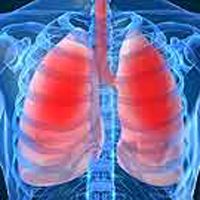Versatile Lung Cells Able to Regenerate More Effectively than Suspected
Mature Type 1 and Type 2 airway cells are able to repair and regenerate lung tissue regardless of cell type, according to researchers from Penn and Duke.

Lung cells can regenerate using another type of lung cell, according to research published in Nature Communications.
Researchers from the University of Pennsylvania Perelman School of Medicine used mouse models in order to understand the plasticity of differentiated cells in adult tissues undergoing repair. The investigators showed that 2 types of cells within the alveoli, the part of the lung that exchanges the lung, can change into each other in the right set of circumstances.
First, the researchers studied the long and thin Type 1 cells where oxygen and carbon dioxide are exchanged by breathing. The type 2 cells the investigators examined produced surfactant, which the researchers explained is a soapy secretion designed to keep airways open. They noted that babies are often treated with surfactant in order to aid breathing.
Both of these cells originate from a shared precursor in the embryo, according to results from studies on the mouse models. Another set of mouse models was used to remove and single cell culture. The researchers used the findings from the plasticity texts to demonstrate regrowth. They found that Type 1 cells are able to turn into Type 2 cells and vice versa.
“It’s as if the lung cells can regenerate from one another as needed to repair missing tissue, suggesting that there is much more flexibility in the system than we have previously appreciated,” senior co author Jon Epstein, MD, explained in a press release. “These aren’t classic stem cells that we see regenerating the lung. They are mature lung cells that awaken in response to injury. We want to learn how the lung regenerates so that we can stimulate the process in situations where it is insufficient, such as in patients with chronic obstructive pulmonary disease (COPD).”
Previously, team members from Duke University that were additionally involved in the current study had demonstrated that Type 2 cells produce surfactant and function as progenitors in adult mice models. This proved the ability of Type 2 cells to change into the gas exchanging Type 1 cells. However, this study is the first time Type 1 cells changing into Type 2 cells has been reported, according to the authors.
“We decided to test that hypothesis about Type 1 cells,” explained co first author Rajan Jain, MD. “We found that Type 1 cells give rise to the Type 2 cells over about three weeks in various models of regeneration. We saw new cells growing back into these new areas of the lung. It’s as if the lung knows it has to grow back and can call into action some Type 1 cells to help in that process.”
In the future, the researchers want to use the methods from this study on intestinal cells and heart cells. They believe that this research can aid the development of treatments for lung diseases like COPD, acute respiratory distress syndrome, and idiopathic pulmonary fibrosis.
“We want to know if we can, and how, to make new lung cells as work-arounds for diseased alveoli cells,” Jain concluded.